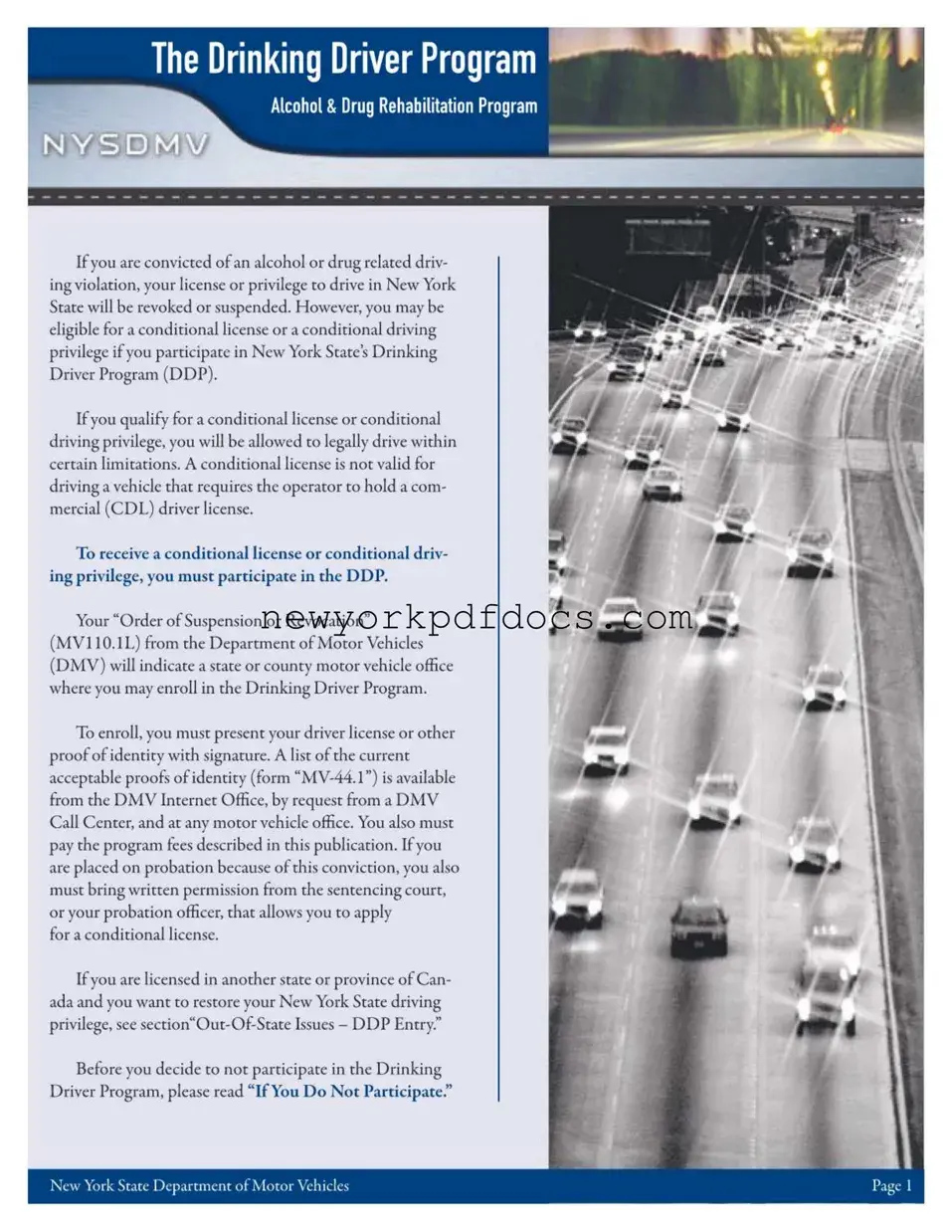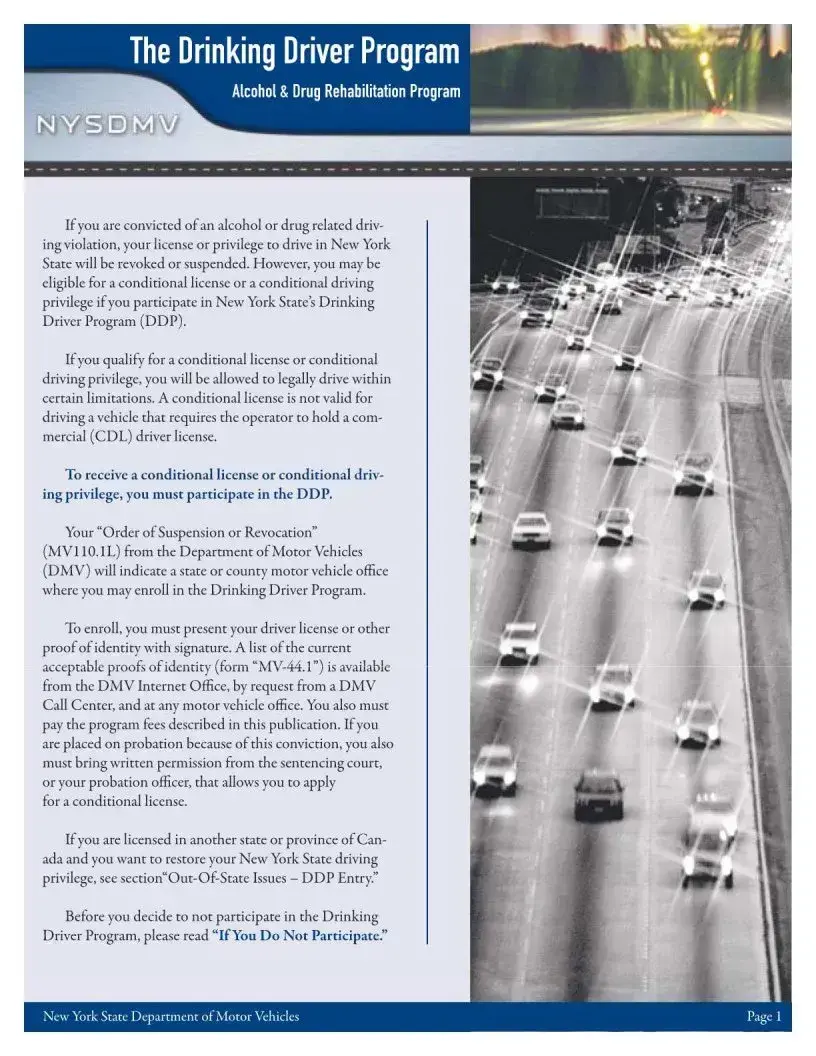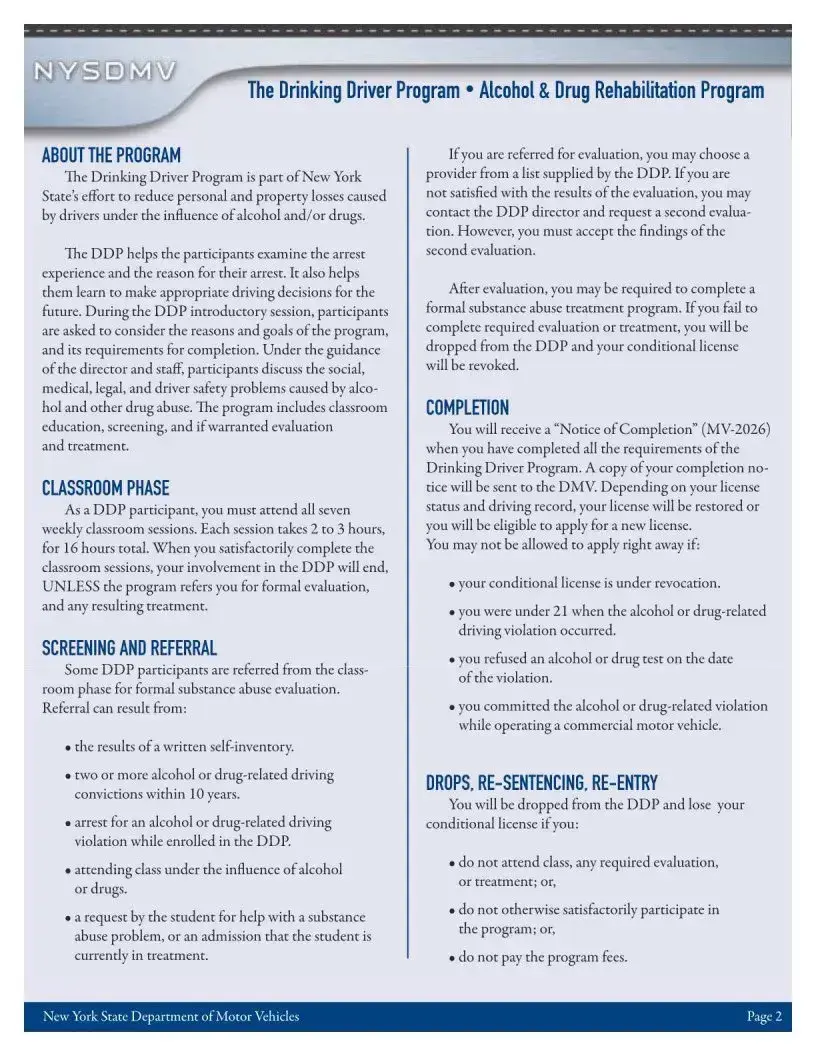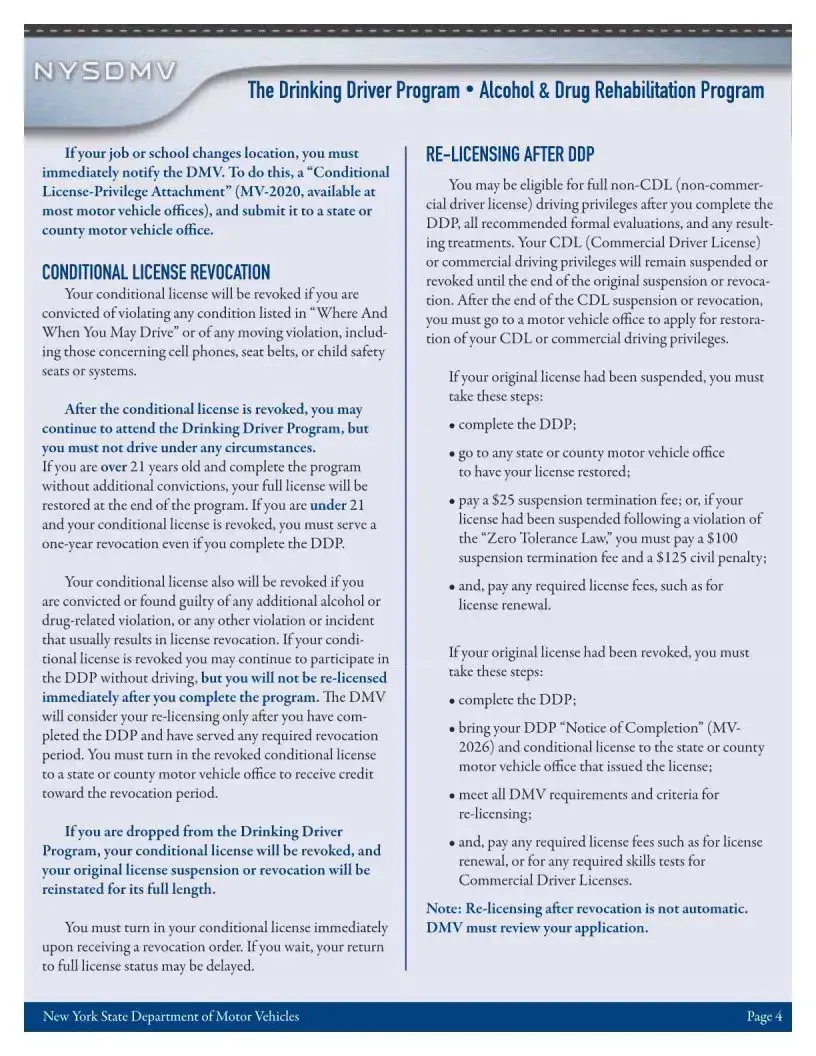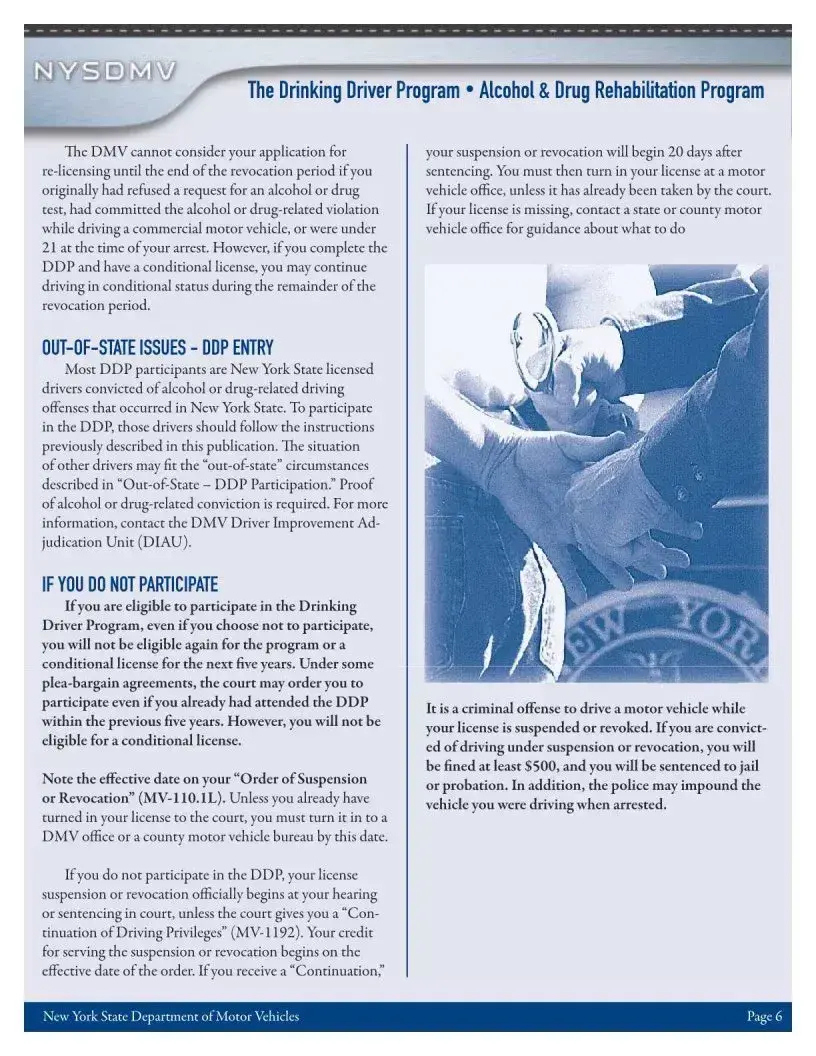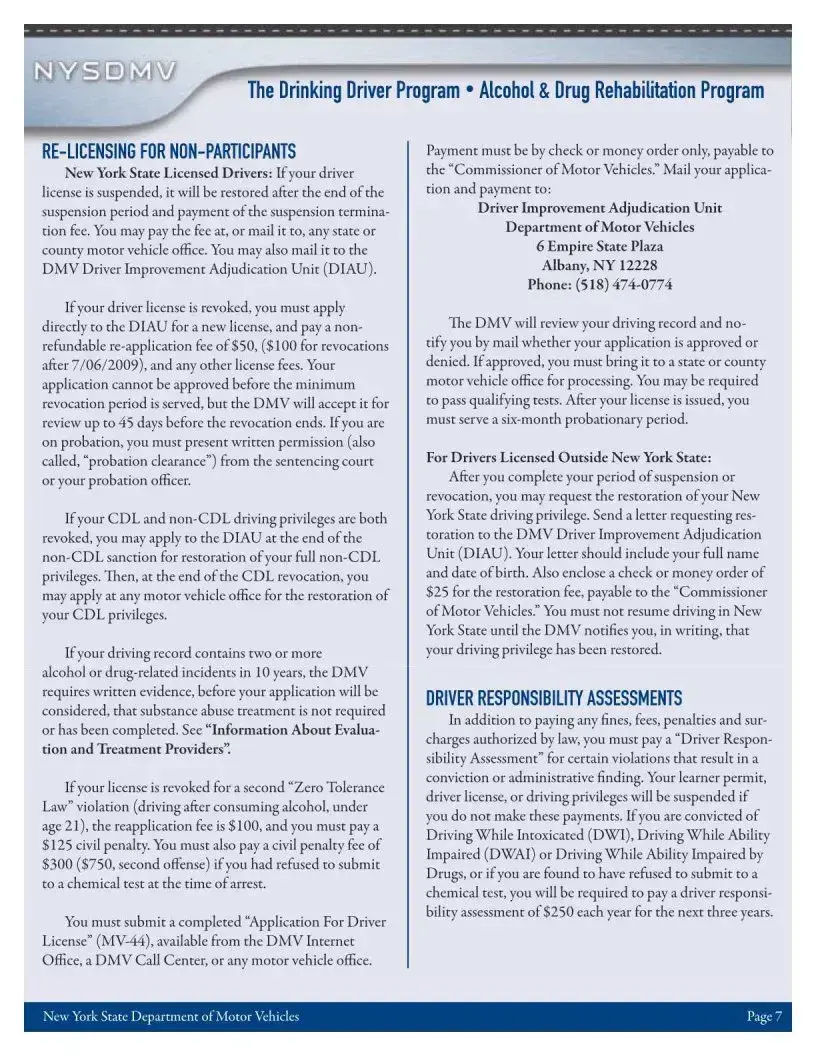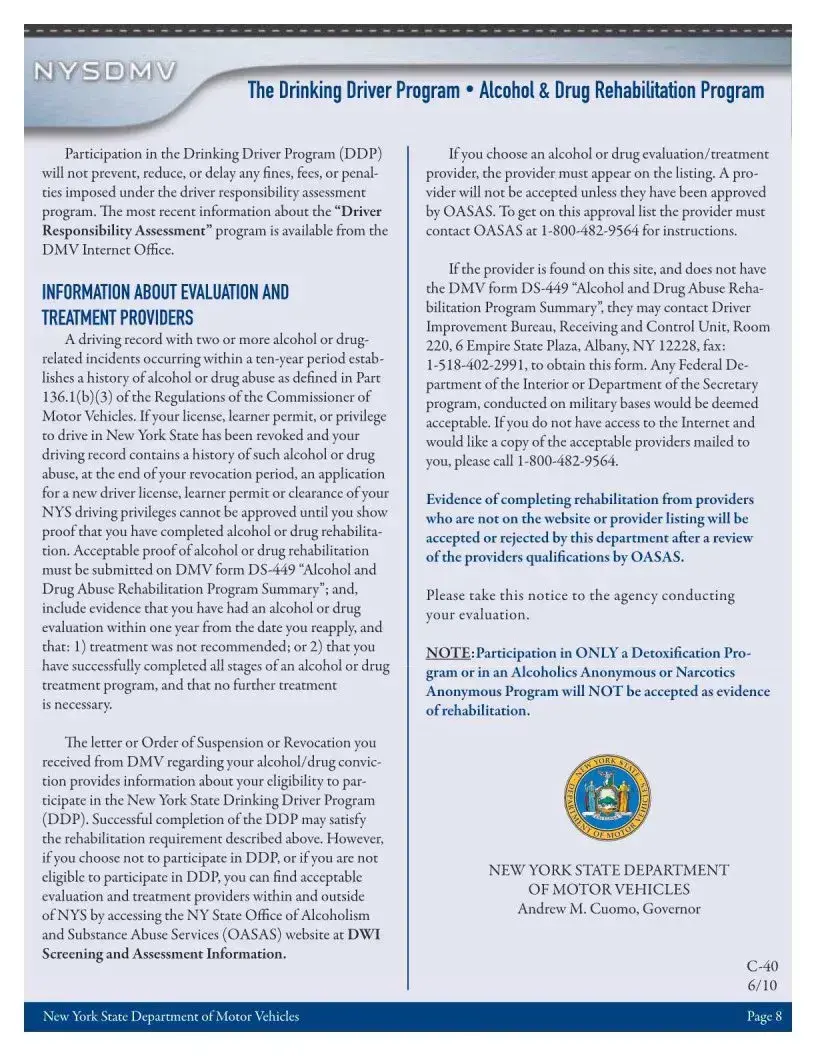Misconception 1: A conditional license allows unrestricted driving.
In reality, a conditional license comes with specific limitations. It is not valid for driving a commercial vehicle and only permits driving under certain conditions.
Misconception 2: You can get a conditional license without participating in the Drinking Driver Program (DDP).
Participation in the DDP is mandatory to qualify for a conditional license. Without completing the program, you cannot obtain this privilege.
Misconception 3: Completing the DDP is optional if you want to restore your driving privileges.
This is incorrect. Completing the DDP is a requirement for restoring your driving privileges after an alcohol or drug-related conviction.
Misconception 4: You can skip sessions in the DDP and still receive a completion notice.
Attendance at all seven weekly sessions is required. Missing any session can lead to being dropped from the program.
Misconception 5: The DDP only involves classroom education.
While classroom education is a significant part, the DDP may also include screening, evaluation, and treatment for substance abuse if necessary.
Misconception 6: If you are referred for evaluation, you can choose any provider.
You must select a provider from a list supplied by the DDP for your formal evaluation. This is a structured process.
Misconception 7: The DDP is only for first-time offenders.
The program is available for anyone with alcohol or drug-related driving convictions, regardless of how many offenses they have had.
Misconception 8: You can re-enter the DDP without any restrictions if you are dropped.
Re-entry is not guaranteed. You need a written letter of consent from the DDP director and must pay a re-entry fee.
Misconception 9: The fees associated with the DDP are refundable.
The initial enrollment fee of $75 is non-refundable. Other fees may also apply, and all payments must be made to the DMV.
